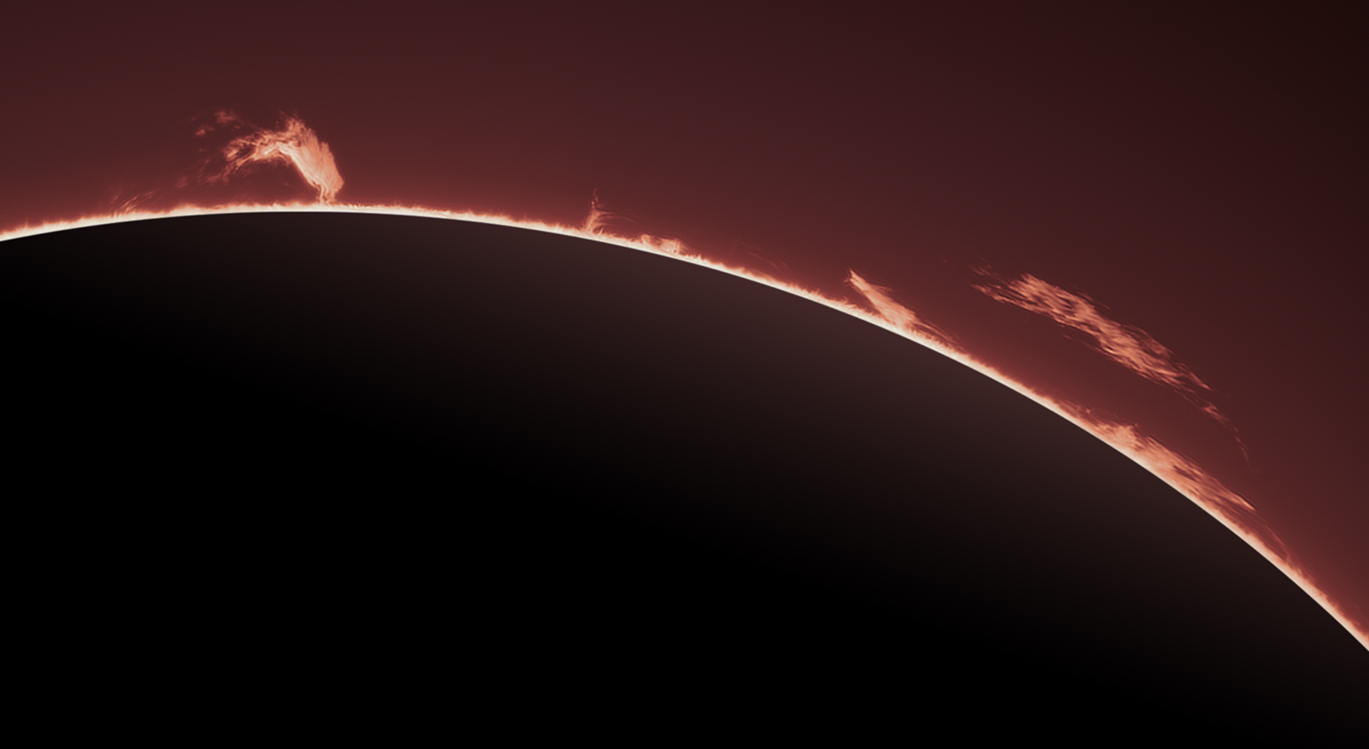“Our dynamic sun is never the same two days,” Alan Friedman says. “There is always something new to observe and photograph.” Shot from a backyard in Buffalo, New York, Alan’s photos reveal the roiling activity of our closest star. In many photos, bursts of gas shoot off the sun’s surface. In another photograph, the silhouette of a small satellite passes in front of the sun.
Alan has been lauded as a “citizen photographer” by Scientific American in part because his process is so low-tech. He uses a 10″ telescope and a video camera more commonly used to catch license plate numbers of cars that run red lights. The critical piece of equipment is a filter that blocks out most of the visible light spectrum to reveal the incredible texture of hydrogen gas in the sun’s chromosphere. He picks the best stills out of the video and then creatively colorizes and edits to create his portraits of the sun. “I try to find different ways to tell the story,” he says. “To emphasize certain features so they can be seen better and to make an emotional connection with the viewer who might be less familiar with the science of our sun.”
Gorgeous images of our home star, Alan’s photos fill a relatively tight niche. Though they’re solar photographs, they’re too highly edited to be hard science and a little too scientific for some art fans. Alan, who has an impressive background in fine arts, thinks of his work as a type of documentation:
I would say it is closest to documentary photography, with one eye on telling the story accurately and the other on telling it powerfully. It’s not an easy fence to straddle. Some in the science community might say that my work takes too many liberties with the data. Some gallery curators feel that the work is too science-y. It might be preferable for me to paint the details with a brush or sketch them with graphite.”
By email, Alan comes off as warm and pragmatic. When asked how he got into solar photography, he genially admitted that he’s grown too old for the late nights associated with nighttime astronomy. “I used to be able to miss a night’s sleep to take photos of Saturn and catch up the next night,” he said. “Now the same abuse leaves me a zombie for a week.” The daytime hours required by solar astronomy are a better fit.
Alan’s photos have caught on. Though he points fans to his Tumblr and phenomenal 2012 TEDx talk, he’s gained a large offline audience as well. His photos have been featured on Discover, Wired, NPR, the Huffington Post, The Daily Mail, and The Today Show. Alan describes his success modestly. “I share the views through my telescopes whenever I can,” he says. “The sun is the only star we can see in detail and much of what we know about distant stars is from observing the star in our own backyard. It would be a shame to miss such an opportunity, no?”
Currently, Alan’s photos are on view at the Orange County Great Park Gallery.
To see more of Alan’s work, visit his blog.












